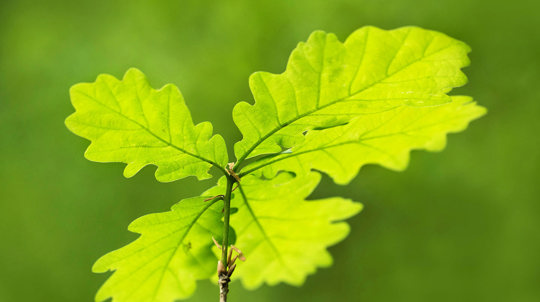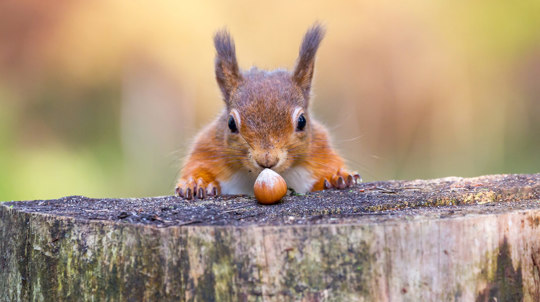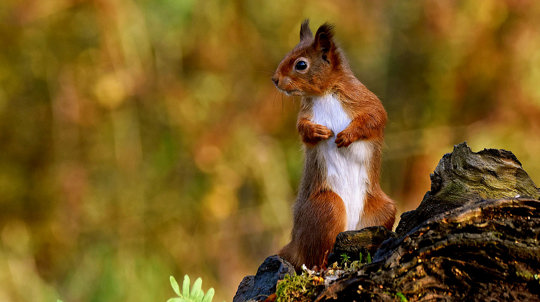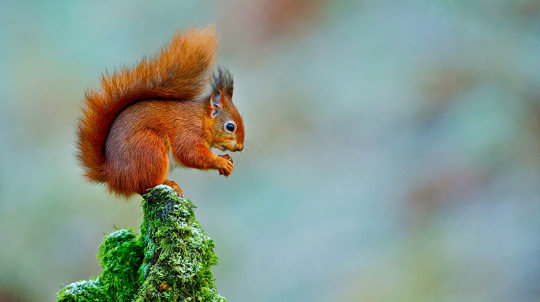Dreys look the same whether they are made by red squirrels or grey squirrels.
Squirrel nests: where and how do they build them?

Content manager
Have you spotted some big, untidy nest-like structures in the trees? You might have found a squirrel nest, known as a drey. Here are our tips on where, when and how to find them.

What does a squirrel drey look like?
Squirrels scurry around collecting whatever they can find to make a warm, dry den for the coming months. The result is a messy ball of leafy twigs about the same size as a football. On the inside, the squirrel's drey is lined with lots of layers of soft materials like moss, feathers, grass, leaves, shredded bark and pine needles.
Usually at least six metres from the ground, dreys tend to be built close to the trunk or in the forks of branches where the tree is stronger and provides more support.
If squirrels can find an existing hole in a tree trunk, like one made by a woodpecker, they might claim it as their own den. They use similar materials to line it inside and might gnaw the entrance to widen it too.
Squirrels have a summer home and a winter home. The summer drey is flatter, lighter and more open as protection from the weather is less important. In autumn, they might adapt the summer nest or abandon it altogether in favour of a freshly built drey that's more suitable for winter weather.
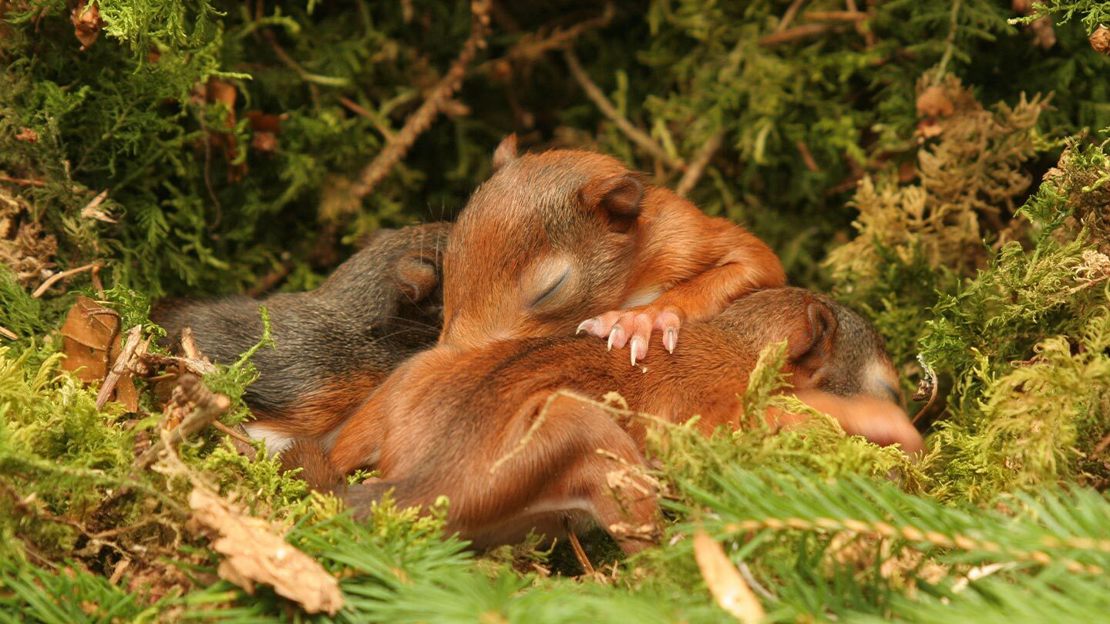
Where to see squirrels and their dreys
Squirrels live throughout the UK. In England, Wales and much of Northern Ireland, you're most likely to see the grey squirrel, which prefers broadleaved woodland habitat and is common in parks and gardens too. Introduced from America in the 1870s, we now have over 2.5 million in the UK.
Our native red squirrel is mostly restricted to Scotland, but other good places to spot them include:
- Northumberland
- Lake District
- Brownsea Island off the Dorset coast.
Dreys can be confused with bird nests
It can be difficult to tell from the ground if a nest belongs to a squirrel or a large bird, like a rook or magpie. To make things even trickier, squirrels and birds sometimes adopt and adapt each others' nests! One can pass back and forth between the two species for several seasons.
A good clue is whether any leaves are woven into the nest, as squirrels tend to keep them but birds don’t. Birds also usually nest closer to the top and further out along the branches. Other good signs that squirrels are nearby include:
- chewed pine cones on the ground that look like apple cores
- scratch marks on the bark
- a ‘chuk chuk’ sound.
The only surefire way to know if you've spotted a squirrel drey is to wait patiently and see if one emerges!
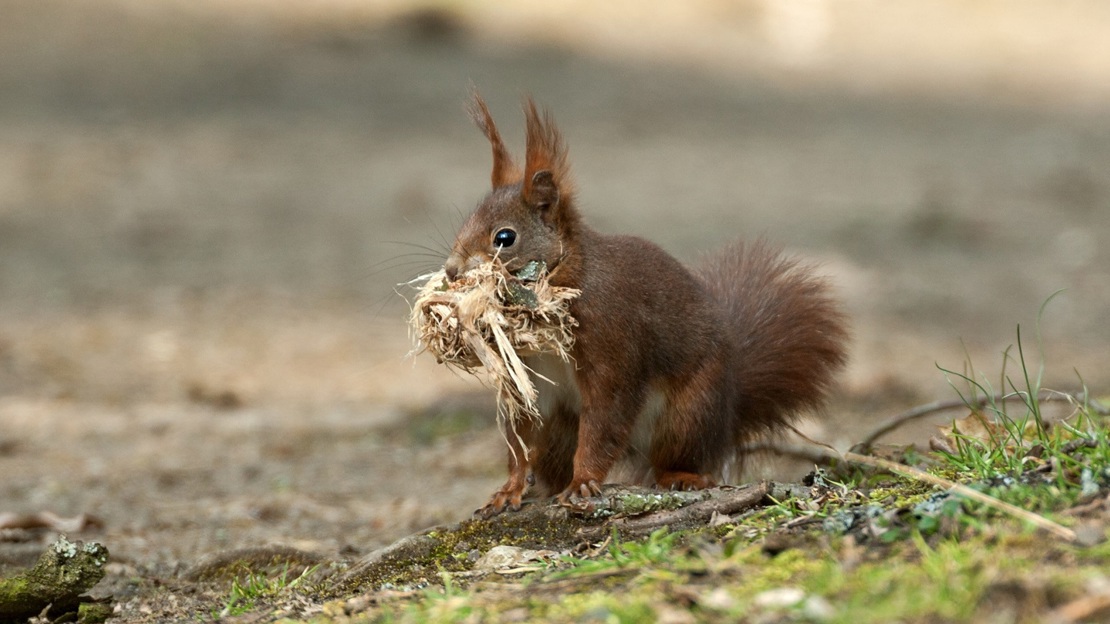
When to see squirrels and their dreys
Reds spend more time in the trees than their grey counterparts, so are often easier to see when the branches have no leaves. Autumn is a good time to spot them as they'll be busy looking for food in preparation for winter.
If you've found a drey, it's worth waiting quietly in the morning or late afternoon when squirrels are most active. Your patience may be rewarded with a special appearance.
How can I help red squirrels?
Record your sightings
To help protect red squirrels, many groups record sightings. If you live in a red squirrel hotspot, search online for your local group.
Offer food and shelter
Buying or making a squirrel box or feeder is a great way to help reds, and sizing the entry hole carefully will mean larger grey squirrels can’t get in. Food sources are scarcer in spring and summer, so putting out a mix of nuts, seeds, fruit and veg can be welcome. Only leave a small amount every few days though as it’s important they still look for natural food sources.
Take care with tree work
If you're responsible for any trees, make sure you check them carefully for nests before carrying out any maintenance work, especially during breeding season.
Create more havens for wildlife
You can help red squirrels and other native species by helping to care for their habitat. Make a difference by supporting our work to plant and protect trees and woods across the UK.

Endangered wildlife appeal
Help support our vital conservation work to protect the UK's vanishingly rare woodland habitats and the species that live there.
Donate now

